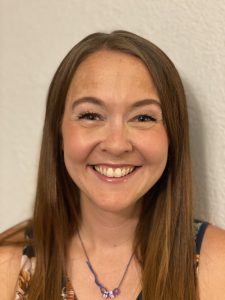Becoming Better Allies
Understanding The Impacts Of Racism
By Erin Pier

What does it mean to be anti-racist? Perhaps this is a term you know well, a practice you embrace and work at fervently. Or, perhaps this is a term you’ve only recently encountered.
In his book, How to Be an Antiracist, Ibram X. Kendi, director of the Antiracist Research and Policy Center at American University, explains. “One endorses either the idea of a racial hierarchy as a racist, or racial equality as an antiracist. One either believes problems are rooted in groups of people, as a racist, or locates the roots of problems in power and policies, as an antiracist. One either allows racial inequities to persevere, as a racist, or confronts racial inequities, as an antiracist.”
A precondition on the journey toward anti-racism is to understand the impact of racism on those who experience it every day.

I was fortunate this month to learn from two Black mothers in Park Hill who shared their own experiences and aspirations. Thanks to Delicia Balgaard, whose three children attend Park Hill Elementary, and Marilyn L. Mills-Walker, a lifelong Park Hill resident and grandmother of a Stedman student. I am grateful for their willingness to let me share their thoughts with you. Their powerful insights can help us all become better advocates for antiracism in our neighborhood schools.
The Dream For All
To begin, I asked each mother what she would like white parents to know about Black children in school.

“I wish white parents knew and believed that we all want the same for our children – better life, education, socioeconomic status, etc.,” Ms. Mills-Walker said. “No one group has a lock on this dream . . . it is the dream for all.”
She continued, “White parents need to understand that our Black children will walk through life differently. Even the most innocent act is perceived differently because of race.” She told me that once her 7 and 13 year-old children were playing in the neighborhood with Nerf guns. Police attempted to ticket the children for brandishing “guns.” She was terrified, but she quickly spoke to the police using “white language” and the police backed down. Of course, she said, this scenario would never have unfolded if the children were white. “It is these continual misunderstandings that make me want to say our Black children will walk through life differently.”
I posed the same question to Ms. Balgaard. “Microaggressions and racist comments are frequently made by white children,” she said. “When Black children have to bear witness to white students speaking poorly about them, it is oppressive, signaling to them that they do not deserve the same level of respect bestowed to their white peers.”
Changes in the Classroom
I asked these mothers how schools can foster anti-racism.
Ms. Balgaard suggested school-facilitated open dialogues about race, white privilege, and inclusion. She also emphasized the need for mandatory staff participation in annual training related to unconscious bias, equity, diversity and inclusion.
She added, “More teachers of color should be recruited. If teachers of color are repeatedly screened out, administrators should ask themselves why and check their own internal biases.” Further, “Discrimination, intolerance, and racism should be openly disavowed by all school staff, through various communication channels,” she said.
Ms. Mills-Walker expressed a desire to see more community-led practices within the school building, especially by parents of Black students. “White people need to understand the language of the community that they have chosen to live in . . . it may be uncomfortable however, it will be honest.”
Not Just What You Say
My final question was about how white parents can become better allies to Black families in schools.
“White parents will be our allies when they are aware that our children will walk through life differently and will look out for Black children,” said Ms. Mills-Walker. “They will be our allies in our school community when they do not let our Black children be put in harm’s way (this includes verbal language).”
Ms. Balgaard shared, “Children are very observant. As a parent, it’s not just what you say, but how you behave. . . Your children are noticing and are forming their own unconscious biases based on the behavior you are modeling.”
It is imperative, she said, for parents to discuss race and anti-racism with their children, beginning early. “No one is color-blind, including your children. Not talking about racism with your children is a parenting misstep.”
In addition, she said, white community members must check their own biases. “Continuously seek to understand: seek the meaning of white privilege and anti-racism. No one is too old to change.”
Final Thoughts
Learning anti-racism is a journey, not a destination. We must recognize, understand, and then work to unlearn internalized biases and practices that fuel oppressive systems. It is not easy, and it is often uncomfortable. By engaging in this work, however, we can tear down problems in power and policies, create an anti-racist community, and ensure everyone in Park Hill has the opportunity to thrive.
Do you want to talk more about anti-racism? Join us on Aug. 12, from 7 p.m. to 8 p.m. for EdEquity Corner, a monthly zoom conversation sponsored by PHNEE for the entire community. You can register at tinyurl.com/edequityaug2020. For more information or to get involved with PHNEE, email info@phnee.org.
Erin Pier is a mother of three, Stedman parent, and school psychologist at AUL Denver. She is an active member of the Park Hill Neighbors For Equity In Education, which works toward diversity, equity, and inclusion in all schools in the neighborhood. For more information, check out the group’s Facebook page at facebook.com/phnee, or send an email to info@phnee.org.
